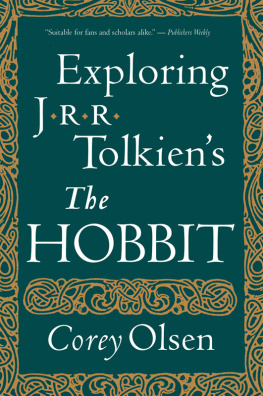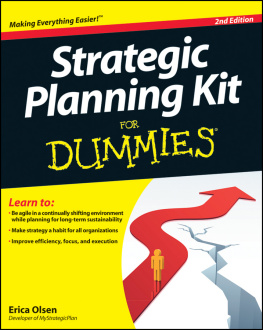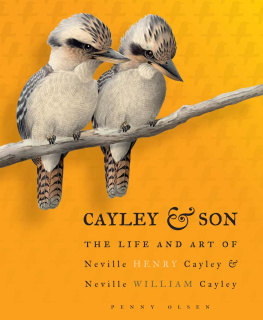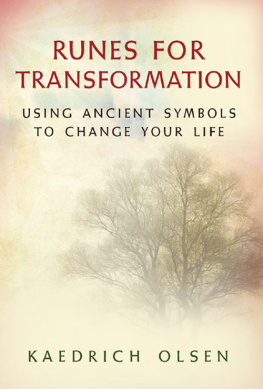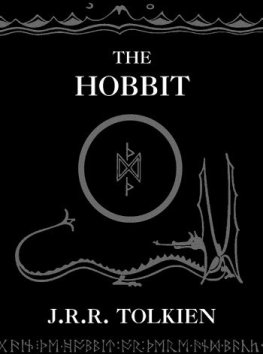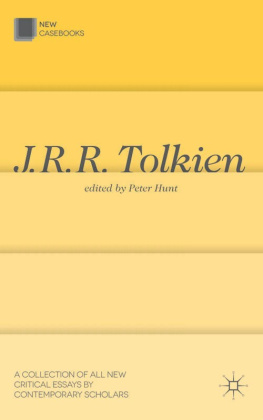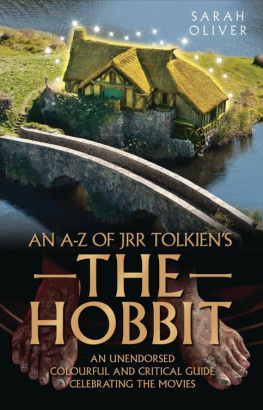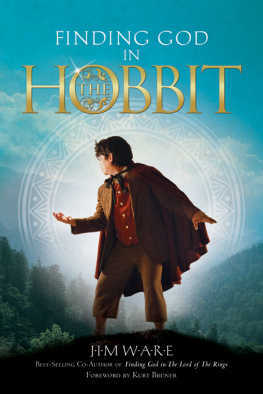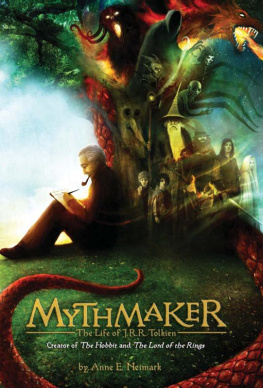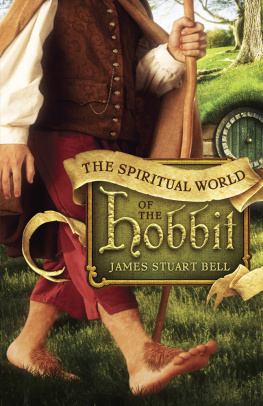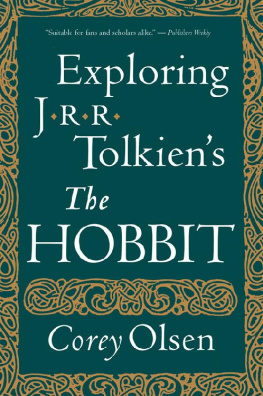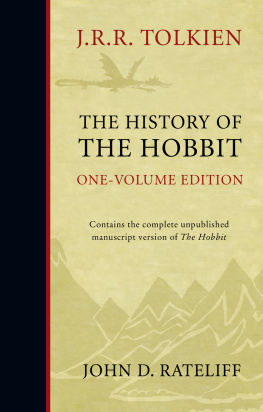First Mariner Books edition 2013
Copyright 2012 by Corey Olsen
All rights reserved
For information about permission to reproduce selections from this book, write to Permissions, Houghton Mifflin Harcourt Publishing Company, 215 Park Avenue South, New York, New York 10003.
www.hmhbooks.com
The Library of Congress has cataloged the print edition as follows:
Olsen, Corey.
Exploring J.R.R. Tolkiens The Hobbit / Corey Olsen.
p. cm.
ISBN 978-0-547-73946-5 (hardback)
ISBN 978-0-544-10663-5 (pbk.)
1. Tolkien, J. R. R. (John Ronald Reuel), 18921973. Hobbit. 2. Middle Earth (Imaginary place) I. Title.
PR 6039. O 32 H 635 2012
823'.912dc23
2012017316
e ISBN 978-0-547-73967-0
v2.0713
Excerpts from The Hobbit by J.R.R. Tolkien. Copyright 1937, 1951, 1966, 1978, 1995 by The J.R.R. Tolkien Copyright Trust. Reprinted by permission of Houghton Mifflin Harcourt Publishing Company. All rights reserved.
To my mother and father
Jeremiah 33:3
Introduction
I HAVE LOVED J.R.R. Tolkiens books for as long as I can remember, though I must admit I dont recall exactly how old I was when I first read The Hobbit; somewhere around eight, I believe. My very first reading of The Lord of the Rings and The Hobbit doesnt stand out in my memory, probably because it was followed immediately by my second reading and then my third. I have read the books at least once a year for the rest of my life to date. I was not, in some ways, a stereotypical Tolkien nerd as a teenagerI didnt learn Quenya, I never taught myself to write Tengwar, and I have never worn a pair of rubber ears. My relationship with Tolkien has always been about reading and re-reading the books, immersing myself in the stories, in Tolkiens world. No matter how many times I read them, I find there are always new discoveries to make.
Tolkiens works served for me, as they have for many, as a gateway to the Middle Ages, inspiring an enduring fascination with medieval literature. (Tolkiens books should probably come with some kind of warning attached: Caution! May Turn Readers into Medievalists!) I ended up getting my PhD in medieval English literature, and when I was hired as a professor at Washington College in Maryland, I was soon able to realize one of my lifes dreams: in addition to my courses on Chaucer and Arthurian literature, I also began to offer a course on Tolkien.
Teaching Tolkiens works at the college level was just as much fun as I had expected it to be. In one way, that class was very different from any other class I had ever taught: most of the people who took my Tolkien class were people who had already read Tolkien, and many of them already considered themselves fans. As a medievalist, I had never had that experience before. I never had people sign up for my Chaucer class because Chaucer was their favorite author. No one had ever come up to me after class to show me the ragged and dearly loved copy of Chrtien de Troyess Arthurian romances that her parents had first read to her when she was seven. I never had a student who was a regular contributor to a Piers Plowman fan site and who customarily attended Langland conventions dressed up as Conscience or one of the theological virtues. Generally, the first order of business in teaching medieval literature is lowering students defenses against it and convincing them that although it is strange and foreign to us, it is still fun and worthwhile. My Tolkien students, by and large, needed far less convincing.
I found among my Tolkien students an obvious hunger to learn more and study the books more thoroughly. I also found numerous obstacles that students wanted help to overcome. Casual fans found many things about Tolkiens writing difficult to understand, and some of his books difficult to get into at all (especially The Silmarillion). Many students, even those who had read Tolkiens major works many times, confessed that they skipped over the poetry as they read, and that the songs and poems just didnt seem all that important or relevant. All in all, I found that what students both liked best and profited from most was the opportunity to read carefully and slowly through the texts, working out the meanings of tough passages and seeing how the ideas in the story came together.
I taught my Tolkien course several times, but as I advanced in my academic career, I became increasingly dissatisfied with the other half of my professorial duties: the world of scholarly publication. Professors, of course, must publish or perish, as everyone knows, but I found the world of scholarly publication frustratingly limited. I would be greatly surprised if many people reading this introduction have ever read the articles on Sir Thomas Malory or even on Tolkien that I had accepted early on in my career. Typical academic books and journals circulate not to thousands, but to hundreds, or even to dozens, of people. They tend to be priced so high that only research libraries can afford to purchase them, and therefore the general public has little or no access to the work that most scholars do. Increasingly, scholarly publication has become in practice a closed conversation among scholars and some of their students. I knew that there were tens of thousands of people in the world who had the same desire to learn more about Tolkien that my college students shared, and I wanted to engage them in a conversation to which everyone could be invited.
In 2009, therefore, I started my podcast and website called The Tolkien Professor (www.tolkienprofessor.com). I started by posting lectures, and I was astounded by the response. Within a month of launching the podcast on iTunes, I had over a thousand subscribers, and in a year the podcast had had over a million downloads. People were even more excited than I expected about the opportunity to take part in a serious academic conversation about Tolkien. I began having recorded discussions, holding live call-in sessions, and hosting online seminars. I have been having a tremendous amount of fun talking to both dedicated Tolkien fans and new Tolkien readers alike over the past several years and helping to facilitate a deeper appreciation for Tolkiens works.
This book brings together the lessons Ive learned in the classroom, the experiences Ive had through my podcast, and the love Ive always had for Tolkiens work. There is nothing I enjoy more than walking slowly through a great book with a group of people, taking the time to notice important details and keep track of themes that often slip by when you read on your own. I hope that you too will enjoy the journey.
Exploring The Hobbit
Many people, I have discovered, get nervous at the prospect of a literary critic discussing a work they love. Too many people have had unpleasant experiences in high school English classes in which they were made to disassemble works of literature, and they dont want to see that grisly fate befall a work they actually value. This book, however, is not called Dissecting The Hobbit. I will not be acting as an amateur psychiatrist (or psychic), claiming to tell you what was in Tolkiens mind and why as he wrote the book. I will not be enthroning myself on the judgment seat as the arbiter of taste, telling you which bits of The Hobbit are good and which are bad. In the end, this book just sets out to do a little more of what I suppose you already do yourself: reading and enjoying TheHobbit.
In Exploring J.R.R. Tolkiens The Hobbit, we will take a journey through the story, looking carefully about us as we go. It is easy to rip through a book that you like at top speed; the main thing I hope to do is to slow things down enough to be able to see more clearly what is unfolding in the story as we go. We will take notice of the recurring themes and images in the book, thinking about the ideas that the story keeps coming back to and developing along the way. We will listen closely to all the songs and poems Tolkien has built into the story, for they reveal a great deal about the book and especially about the characters who sing or recite them. If we walk slowly and pay attention, we may find that our perspective is enriched by the journey as much as Bilbos was, and that our eyes have been opened to marvels that we never expected to see.
Next page
